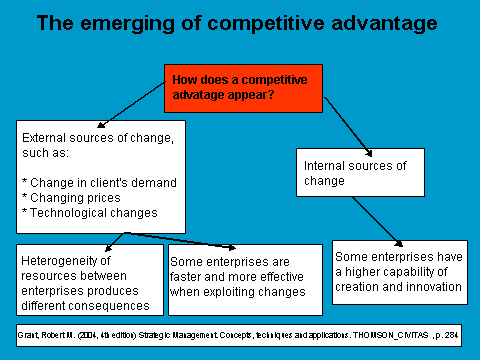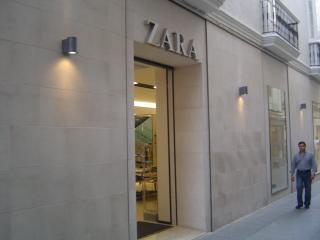How do we create a competitive advantage?
We have already stated that we exist in a heavily competitive market which in turn is excessively saturated. Clients can find virtually anything they might need; and those needs come in a great variety when it comes to manufacturers. However, there is always a requisition. This requisition, this gap, this niche in marketing terms is what we have to discover in order to be different. This requisition can be found in “almost” everything, or better yet, in everything , but doing it in a different way.
Moreover, this metaphor of requisition can be found fundamentally thanks to changes that may happen outside or within an enterprise. From this prism, competitive advantages can be created for an enterprise. These can be verified with the consequent increase in profits when compared to the competition. This is fruit from a better placement in the market and other factors, which can be the resources of an enterprise and the way these are put to work by their managers.
The change generating factors from outside or inside an enterprise which create or may create a competitive advantage are summarized in the following chart:

External changes.-
From the external point of view of an enterprise: the greater the changes in a sector and the higher the unpredictability of their consequences, the higher the chances of creating a competitive advantage for an enterprise (not yet well-positioned in the market) will be. There would be a higher possibility of change, of using existing resources, of valuing new and unused resources, of observing the capabilities of the enterprise,...
And, thus, arrives the moment for strategy, the moment for change, of testing whether or not the structure of a well-positioned enterprise is ready for an important change in its sector. Enterprises which at that moment were competing under the same conditions find out how much their surroundings have changed. Here is where a competitive advantage emerges: drawing positive consequences when valuing some resources which, being similar to those the competition possesses, have been deemed as important while the rest haven't been able to do so.
Two factors: we have to know/be able to value these resources, for them to work together. Moreover, we have to be quick in this process of change. If not, another enterprise will do so. With that being said, an enterprise must be capable to respond and be quick in that response. An example of speed and response against changes in fashion tendencies is the Spanish enterprise ZARA . ZARA is capable of exploiting the changes in fashion tendencies in an effective manner. This is possible through a client observation system that allows them to detect any changes before the competition does, as well as being capable of facing those changes in an efficient way.

In the following section, we will see two example cases related to television networks in Spain.
Internal changes.-
Competitive can also be generated by the enterprise itself. This means that enterprises with better resources and capabilities are able to implement new game rules in the sector, which in turn creates instability among its competitors. This is generated through innovation, from which competitive advantage is created. This also leaves the advantages owned by the competition at that moment out of the game.
Changes that can occur from within an enterprise and that can provoke changes in game rules from the sector come from diversification of the production and/or services of an enterprise. This encompasses a greater number of competitors in the market. An example is the case of Telefónica (Spanish telephone company), which starting from land lines, has diversified its orientation towards the client with internet, mobile phones ( Movistar ), television, ...

These opportunities can also be created by making objectives (which were previously incompatible) compatible. A flexible enterprise is able to combine its high quality products at a low price. We will discuss these cost and differentiation strategies in depth throughout this course. Finally, the last way in which an enterprise can change the game rules in a sector and be successful comes in the form of redefining its chain of value.An example of this is seen in the Swedish enterprise IKEA in what they call business concept. It is based in offering a wide variety of home products, which are functional, well-designed, and affordable to the majority of people. This presents an advantage in costs. In IKEA, the client assembles the furniture he buys himself, which eliminates any shipment or assembly. Moreover, the client has the piece of furniture he buys available to him at the moment of purchase.
